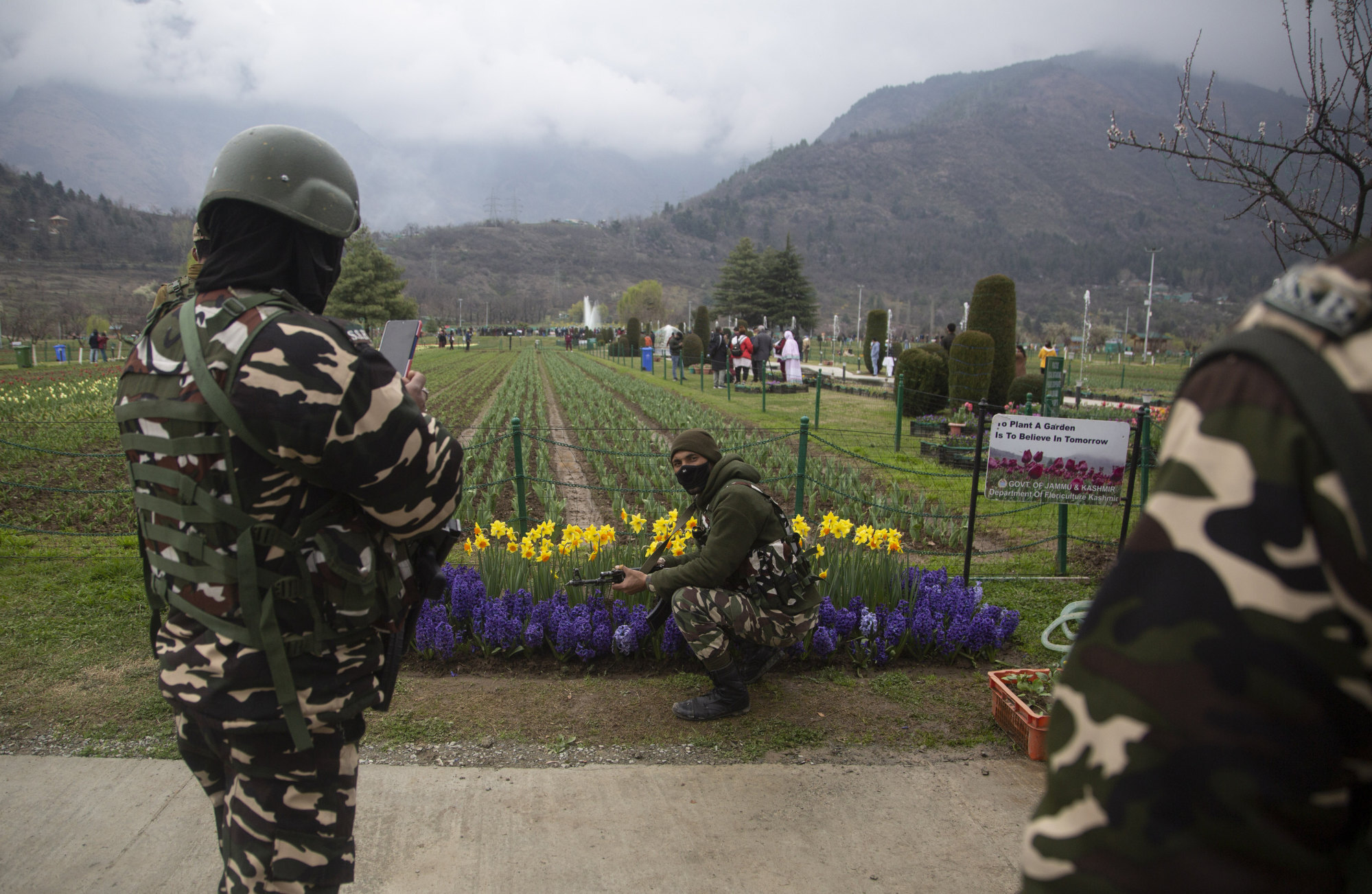
As Kashmir’s tourism booms, locals brave risk of coronavirus surge in India
- Remote areas in Kashmir are seeing an influx of tourists as global coronavirus travel restrictions nudge Indians to holiday domestically
- While the tourism boom brings cheer for disputed Kashmir, which has long been a site for conflict and violence, a fresh wave of infections is worrying officials
Basit lives along the foothills of the Zabarwan hills, an eastern pocket of Srinagar where nurseries outnumber houses and few visitors venture even in normal times.
Owing to recent restrictions on non-local vehicles, travel in Kashmir has also been sparse. Yet when Basit arrived back after work on a Sunday evening, he was greeted by hundreds of taxis stacked along the narrow road which leads to his home.
Skiing in the Himalayas is back on for Indian tourists
“There is hardly any space for walking. Cars and people are everywhere; this is a mockery of social distancing,” said Basit, a restaurant manager.
“Before the pandemic, usually no one came except for a few locals. But this spring, there are people all the time,” he added, as yet more sedans and visitors swarmed his tiny neighbourhood – next to a seasonal tulip garden, the largest in Asia.
While major tourist destinations around the world have suffered because of the coronavirus, Kashmir is having one of its busiest seasons ever.
The Indira Gandhi Memorial Tulip Garden in Srinagar, which opened for the season last month, has been drawing hordes of visitors eager to take in the beauty of the garden’s 15 million flowers.
In the adjacent ski resort of Gulmarg, the tourist footfall has also been far higher than any other season in at least three decades, according to the tourism department.

Tourism is a vital lifeline for Kashmir’s economy, contributing nearly 10 per cent to the region’s GDP and employing more than 100,000 people, directly and indirectly, according to approximate industry estimates. It also caters to allied industries such as transport, handlooms and handicrafts.
Is China behind mystery Kashmir ceasefire between India and Pakistan?
But India has held firm. It has deployed hundreds of thousands of troops to crush the rebellion, and in 2019 stripped Kashmir of its autonomy, a move that left even those siding with India feeling betrayed.
Overnight, hundreds of thousands of foreign and domestic tourists, as well as Hindu pilgrims and workers from mainland India scrambled for the exit, leaving a trail of losses and despair for those dependent on tourism. The subsequent 18-month internet ban in Kashmir and the uncertain political situation kept visitors away even after the situation became relatively better.
While Kashmir’s unexpected tourism influx is a boon for the region, it comes fraught with danger.
In Kashmir, the number of active coronavirus cases recently rose to 8,000, with more than 6,000 cases recorded in the first 12 days of April. Authorities shut schools last week and also imposed a strict night curfew throughout the region.
Tweeting his concern, the principal secretary of Kashmir warned that Covid-19 was spreading four times faster in Kashmir than in other states, and needed precautionary measures. Authorities are mulling whether to close tourist spots.

Still, some Kashmiris are not complaining about the influx of visitors.
Wearing three face masks for protection, potter Sharif-ud-din goes to Srinagar’s tulip garden every morning to ply his wares. Lining his ceramics neatly over a home-made trampoline, Sharif-ud-din knows he has a long day’s work ahead.
“The garden is crowded until late evening. Sometimes, the police have to forcefully evict the visitors,” he said.
Forget work from home. In India, you can work from mountains
Sharif-ud-din is aware of the risks to his health. He suffers from underlying medical issues, and relatives have advised him to stay at home during the pandemic. But with a family of four to support, he says he has little choice.
“I don’t know if a lockdown will be reinstated again,” he said. “But till then, I have to earn as much as I can for my family.”
He then rises from his plastic chair and begins calling out: “Authentic Kashmiri ceramics, only for 100 rupees each.”


